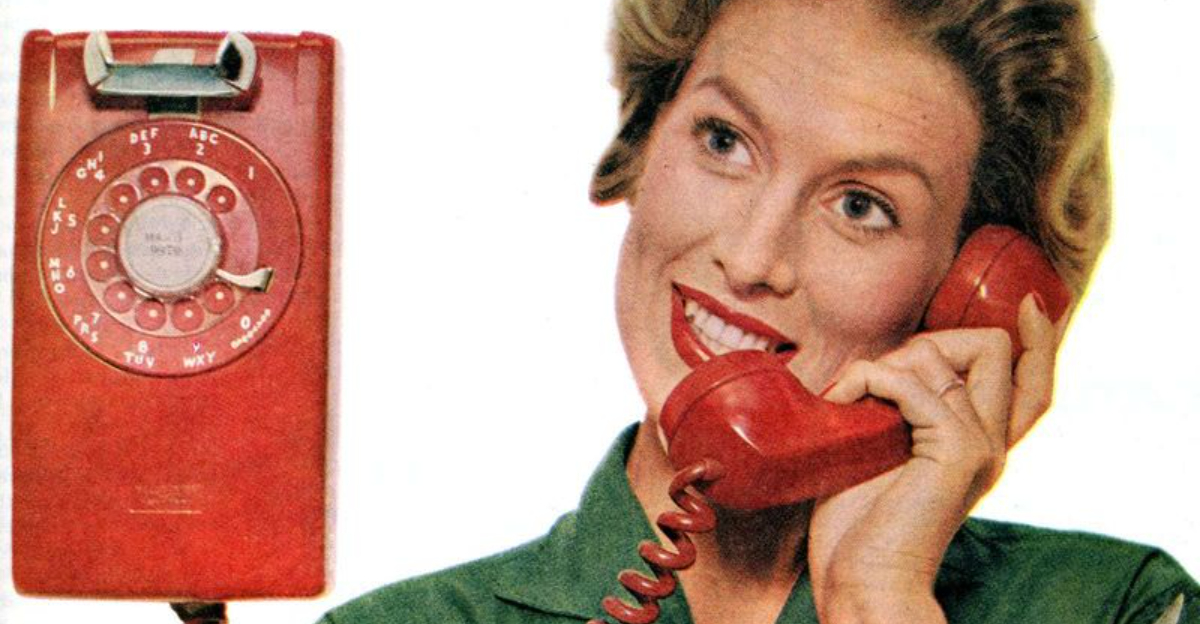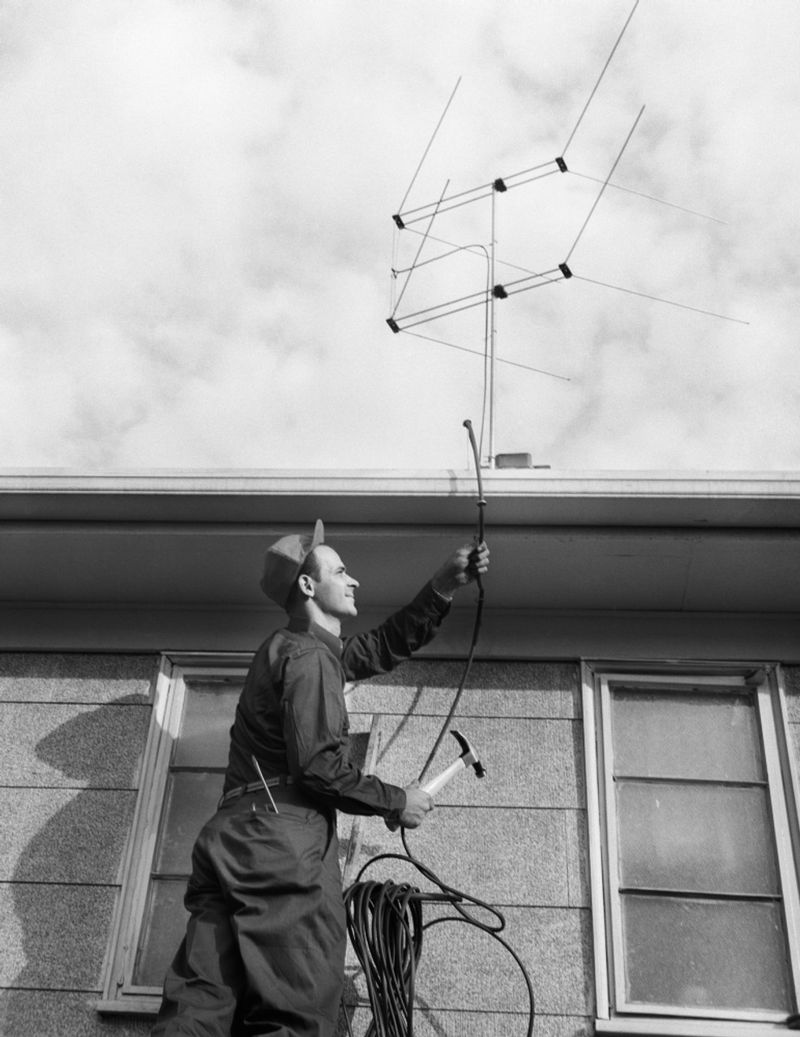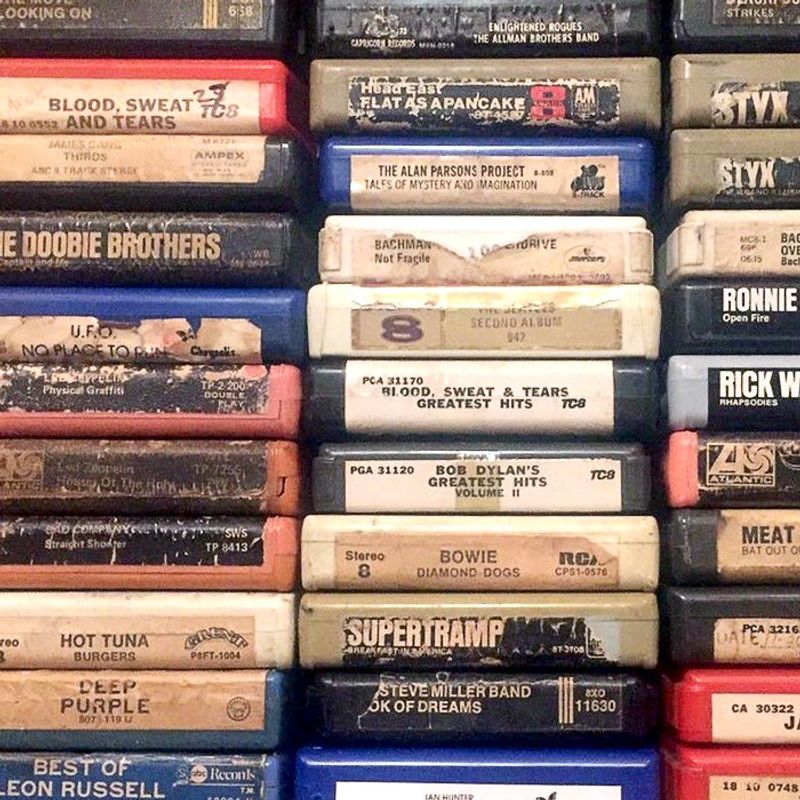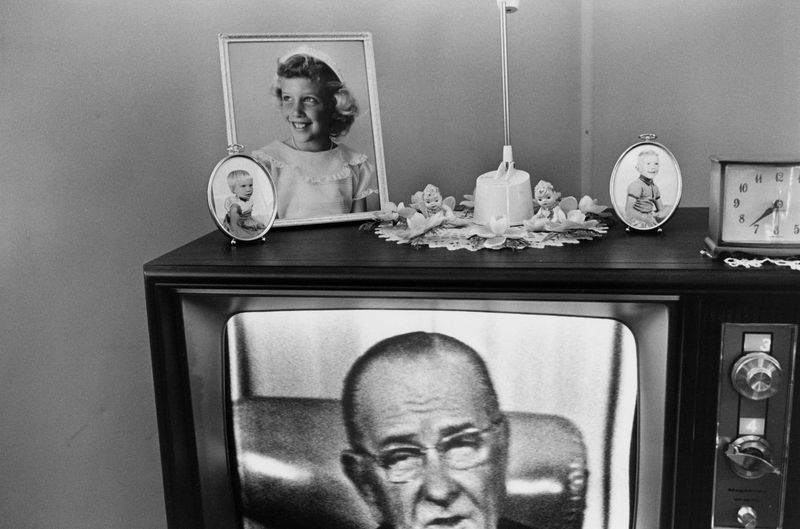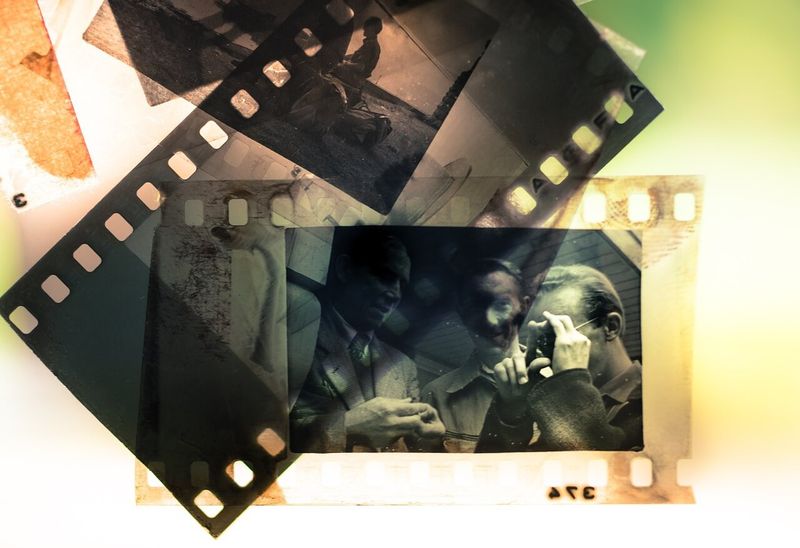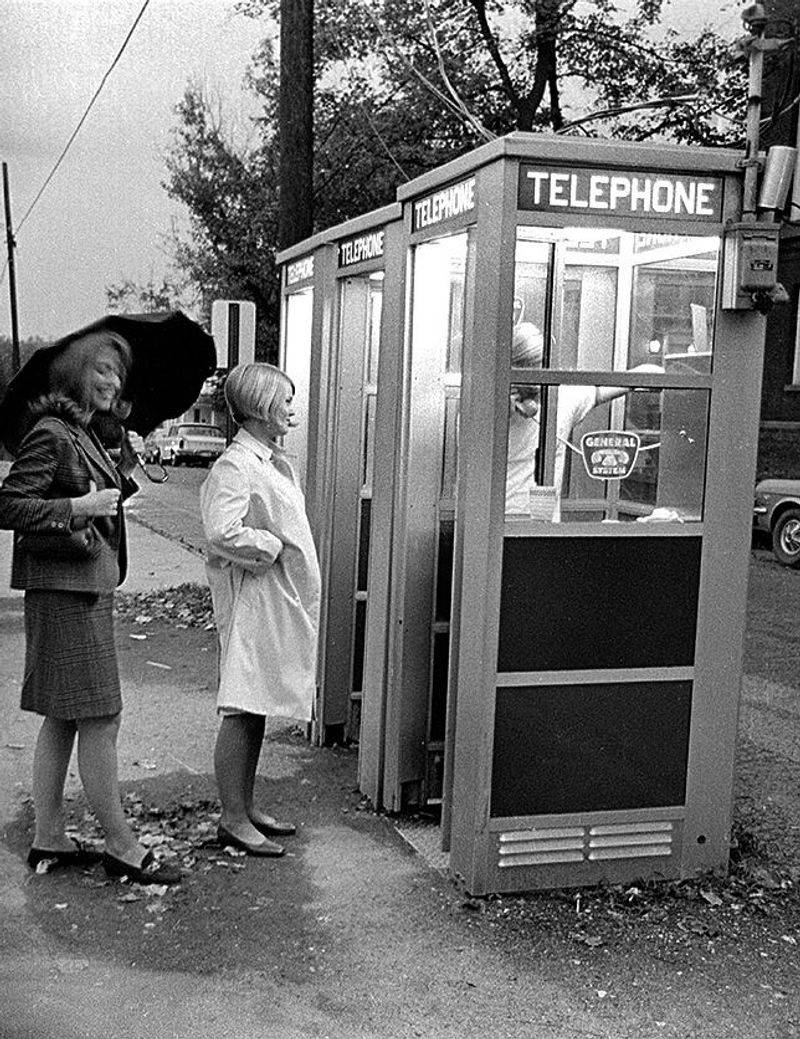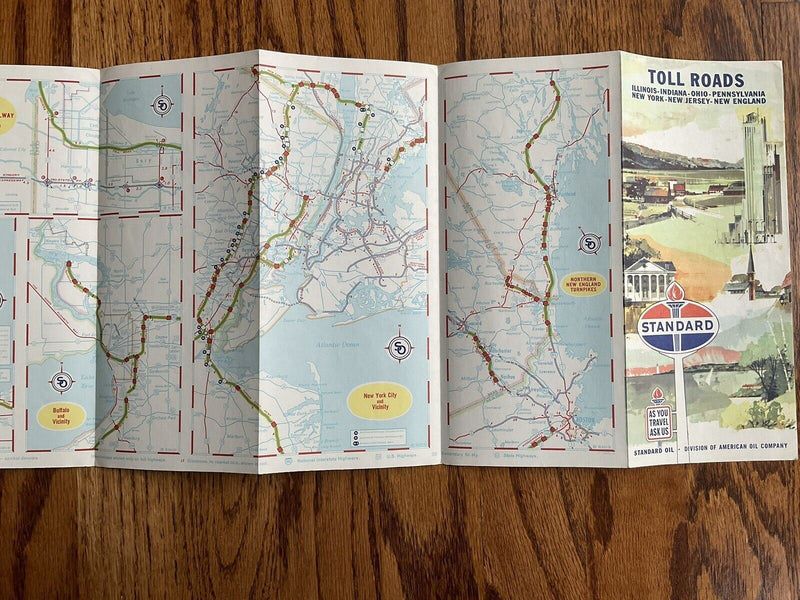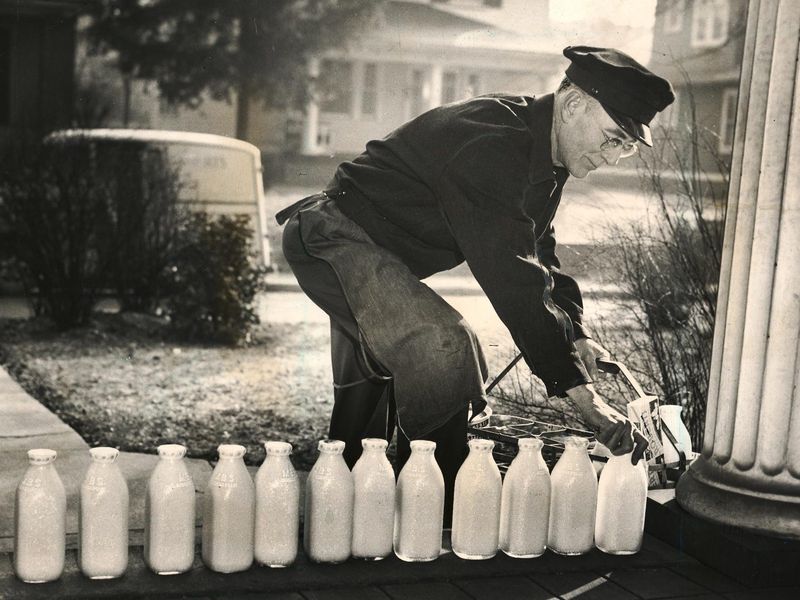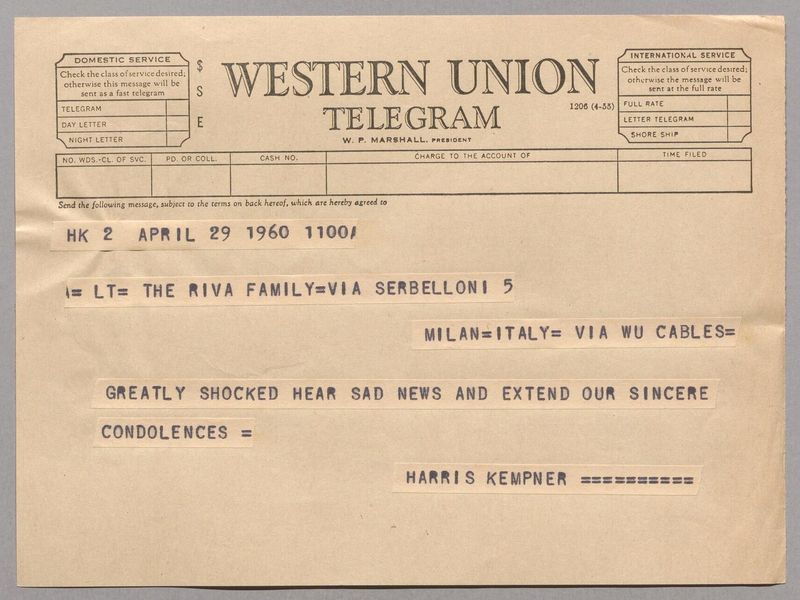The 1960s was a decade where cultural norms and daily practices were distinctly different from today. From technology to social behaviors, many things your parents did have disappeared into the annals of history. Let’s explore 20 such activities that defined an era, but have since vanished forever.
1. Waiting for TV Stations to “Sign On”
In the ’60s, television wasn’t a 24/7 affair. Stations would “sign off” at night, often with a rendition of the national anthem, leaving night owls with a test pattern until morning. This meant families had to plan their viewing around specific schedules.
Morning cartoons or evening shows were a shared experience, creating a sense of community. Anticipation for your favorite program was part of the charm. In today’s world of on-demand access, such waits seem a quaint memory of a time gone by.
2. Adjusting the TV Antenna for Better Reception
Adjusting ‘rabbit ears’ was an art form. Sometimes, it required a family member to be part of the equation, standing in just the right spot to catch the signal.
While today’s digital world rarely experiences such interruptions, the tactile experience of fiddling with antennas is fondly remembered as a quirky part of family life. It was a time when getting a clear picture felt like a small triumph.
3. Smoking Everywhere
In the ’60s, lighting up was a social norm. Whether on planes, in offices, or even hospitals, smoking was ubiquitous. Ads glamorized it, and few questioned the health implications.
With growing awareness, the following decades saw a cultural shift. Today, such scenes are unimaginable, replaced by smoke-free environments. This change reflects a broader societal move towards health consciousness, radically altering public spaces forever.
4. Writing Letters by Hand
Long before emails and instant messaging, the art of letter writing prevailed. Sending a letter meant carefully composing your thoughts, knowing it would take days or weeks to reach its recipient. This made each correspondence a cherished exchange.
Handwritten letters carried a personal touch, from the choice of stationery to the penmanship style. Today, the immediacy of digital communication has largely replaced this form. Yet, the nostalgia of finding a letter in your mailbox remains a fond relic of bygone days.
5. Using a Rotary Phone
Remember the satisfying click of a rotary phone as each number was dialed? Back in the ’60s, this was the standard mode of telecommunication. With no caller ID or touchscreens, you had to spin each digit individually. The process was slow, but the anticipation of hearing a loved one’s voice made it worthwhile.
For kids today, the concept of waiting just to dial a number seems foreign. Phones were connected by cords, giving you limited mobility. Yet, the nostalgia of those simple conversations remains etched in the memories of many.
6. Using a Slide Rule
Before pocket calculators became a staple, the slide rule was the engineer’s weapon of choice. This analog tool required skill and practice to master, enabling complex calculations with just a few adjustments.
In classrooms and laboratories, slide rules were as essential as textbooks. They symbolize a period when mathematical prowess was honed through tactile learning. While digital technology offers precision and speed today, the slide rule era is remembered for its hands-on approach to problem-solving.
7. Listening to 8-Track Tapes
Meet the predecessor to cassettes and CDs: the 8-track tape. These chunky cartridges were the epitome of portable music, offering a continuous play that was a marvel of its time. Known for their distinct clunk as they switched tracks, 8-tracks were a staple in cars and living rooms.
The era of 8-tracks was short-lived, but it paved the way for subsequent audio technology. For those who grew up with them, there’s a nostalgic joy in the imperfect, hissing sounds they produced, capturing the spirit of a musical revolution.
8. Driving Without Seat Belts
Safety took a back seat in the ’60s—literally. Cars were designed with style in mind, but seat belts were often seen as optional extras. Airbags were a distant dream, and the idea of car safety was more a hope than a guarantee.
Families would pile into vehicles for road trips, with kids unbuckled in the backseat. While today’s stringent safety standards make such scenarios unthinkable, the carefree spirit of those drives is a memory cherished by many, despite the risks involved.
9. Watching Black-and-White TV
Color TV was cutting-edge, but for many, black-and-white sets were the norm. Shows like “I Love Lucy” and “The Twilight Zone” were experienced in grayscale, adding a unique charm to the viewing experience.
Families would gather around the single TV set, creating shared memories in front of the flickering screen. Today, with high-definition color displays, it’s hard to imagine the simplicity of black-and-white viewing. Yet, it remains an iconic symbol of an era defined by innovation and shared cultural moments.
10. Taking Film to Be Developed
Remember the suspense of waiting for your photos? In the ’60s, taking pictures meant using film, and seeing the results required patience. You’d drop off your film at a drugstore or photo lab, then eagerly anticipate the prints.
This delay in gratification made each photo a keepsake, often shared in physical albums. Today’s instant digital photos have removed this waiting game, providing immediate memories but lacking the tangible anticipation that once accompanied photography.
11. Using a Phone Booth
In an era without mobile phones, the phone booth was a lifeline. Located on street corners and in public spaces, these booths required a pocketful of coins to connect with others. Making a call meant finding a booth, often waiting in line, and hoping for a clear line.
The iconic design of these booths, often red or transparent, became a cultural symbol. Today, most have vanished, replaced by the convenience of mobile technology, but their memory evokes a time of simpler, albeit less connected, communication.
12. Reading Paper Maps on Road Trips
In the age before GPS, road trips demanded a trusty paper map. Navigating winding routes and planning stops required careful map reading, often sparking lively debates about the correct path.
These maps, though cumbersome, offered a tangible sense of adventure. Today’s digital navigation tools provide precision but lack the tactile connection to exploration. Those who navigated by map remember the journey as much as the destination, with each fold and crease telling its own story.
13. Milk Delivery to the Doorstep
Imagine waking up to the clink of glass bottles. Milk delivery was a staple of the ’60s household, with fresh milk left at your door by the trusty milkman. It was a convenience many took for granted, fostering a sense of community.
This daily ritual has been replaced by supermarket trips and plastic cartons, but the memory of those glass-bottled deliveries lingers. It represents a time of simplicity, where local connections mattered and the milkman was a familiar face in the neighborhood.
14. Wearing Formal Clothes to Fly
Flying was once a glamorous affair. In the ’60s, air travel was an event where passengers donned their best suits and dresses. Airlines emphasized luxury and comfort, and the experience was far removed from today’s casual approach.
Dressing up for flights added a sense of occasion. Today, with the democratization of air travel, the focus has shifted to convenience and efficiency. Yet, the memories of flying as a stylish event evoke nostalgia for an era of elegance in the skies.
15. Using a Typewriter (with Carbon Paper)
Before computers, the typewriter was king. In the ’60s, typing a document required precision and patience, and mistakes meant starting over or using correction fluid. Carbon paper allowed for duplicate copies but was messy and cumbersome.
The clack of keys was a familiar soundtrack in homes and offices. While digital word processing has streamlined writing, the tactile, deliberate nature of typewriting is fondly remembered by those who experienced it, marking a significant chapter in the evolution of communication technology.
16. Playing Outside Until Streetlights Came On
In a time before screen time, kids played outside from morning until the streetlights signaled the day’s end. Unsupervised adventures, from building forts to neighborhood games, were the norm, fostering creativity and independence.
This freedom is less common today, replaced by structured activities and digital pastimes. Yet, the memories of those endless summer days remain vivid for many, highlighting a simple, joyful era where imagination ruled and the world was a playground waiting to be explored.
17. Buying Leaded Gasoline
Leaded gasoline was the norm, fueling every road trip and daily commute. It was a common sight to see drivers at the pump, filling up with little regard for environmental impact. Ads touted its benefits, unaware of the health risks.
The eventual ban in the ’70s marked a significant environmental shift. While today’s fuel options are cleaner, the era of leaded gas serves as a reminder of changing attitudes toward sustainability and the ongoing evolution of automotive technology.
18. Watching Newsreels in Theaters
Before 24-hour news channels, people caught up on world events with newsreels shown in theaters. These short films played before the main feature, offering glimpses into current affairs and global happenings.
Newsreels made news accessible, turning cinema visits into informative experiences. As television news gained prominence, this tradition faded, but it remains a cherished memory of how information was once consumed, bringing the world into focus in a way that was both educational and entertaining.
19. Using a Mimeograph Machine
The mimeograph was a pre-digital copy machine, using ink and stencils to produce copies with a distinctive scent and purple ink. In schools and offices, mimeographs churned out handouts and documents, each page a labor of love.
The process was messy and imprecise, yet it played a crucial role in communication. Today, digital printers have replaced mimeographs, but those who used them remember the machine’s quirks and the unique texture of its output as a symbol of resourcefulness.
20. Sending Telegrams
Telegrams were the text messages of the 1960s, used for urgent communication. Each word counted, so messages were concise and to the point. Sending a telegram involved visiting a post office and waiting for it to be transmitted.
The anticipation of receiving a telegram added to its gravity, often delivering important news. While email and instant messaging offer instant connection today, the telegram era is remembered for its formality and the significant weight carried by each brief message.
